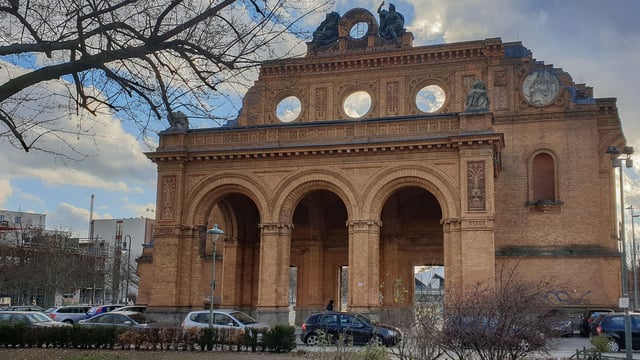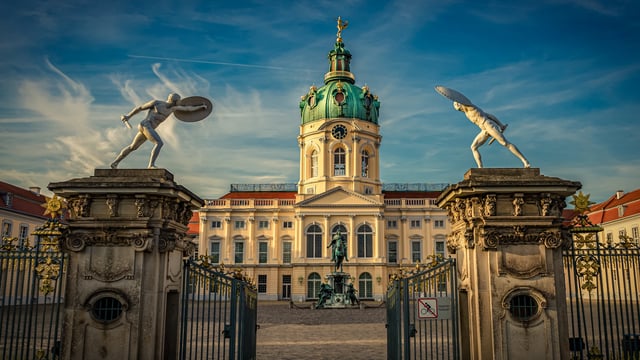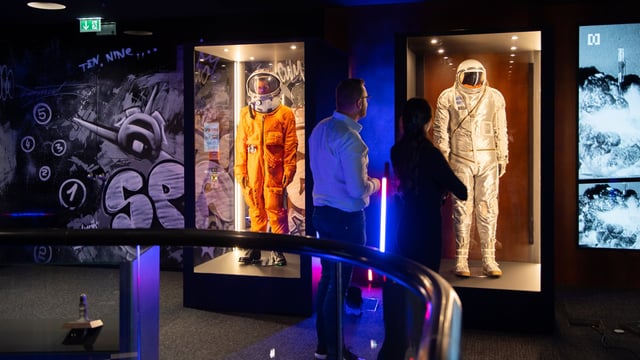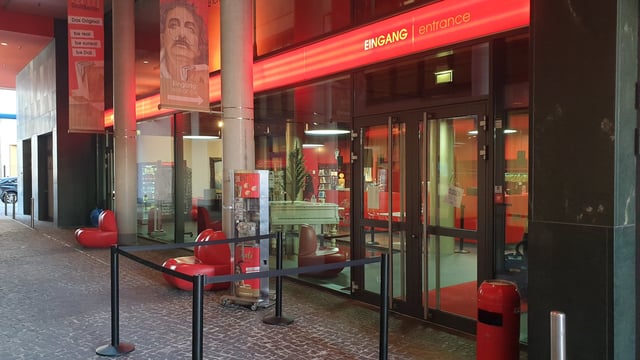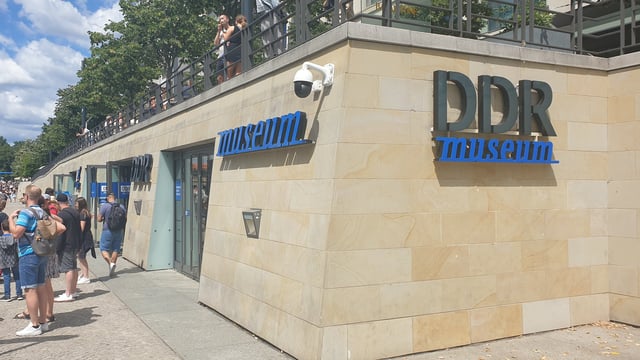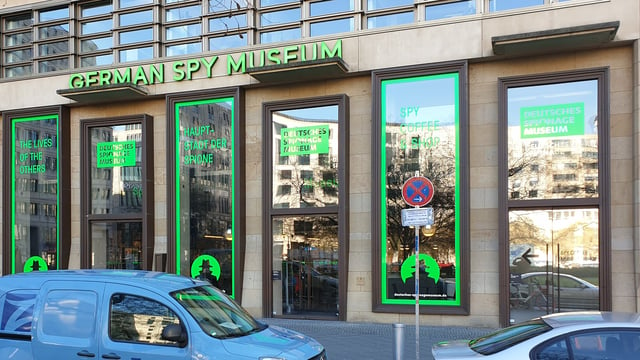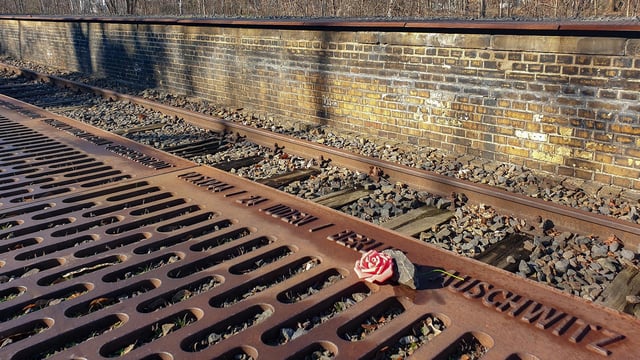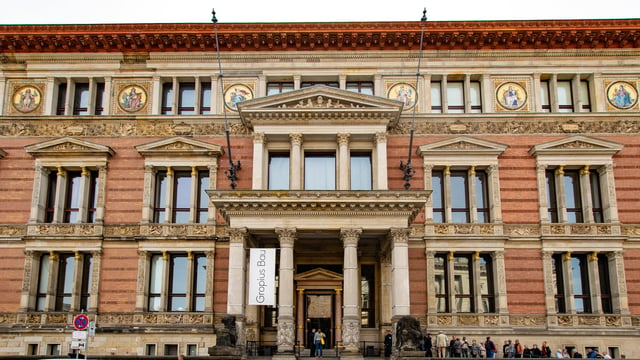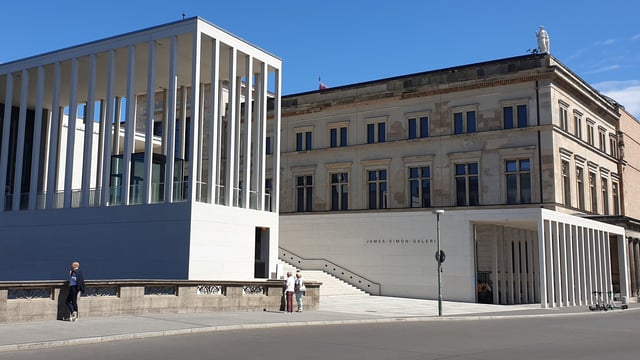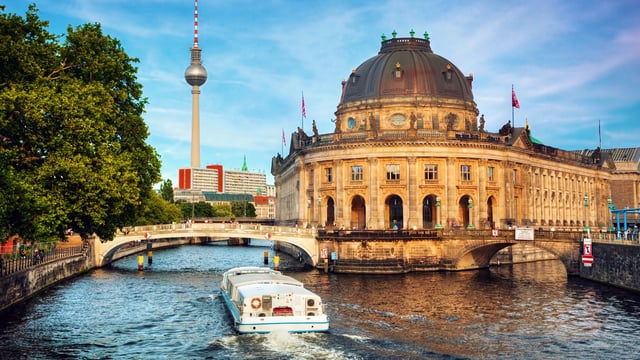Berlin
a - Z of Art, History & Archaeology Sites & Museums
With its origins in he 12th century, and today, once again, the capital city of Germany. With many tumultuous periods during the centuries in between. There is a lot to see in Berlin. Whether you have a deep interest in art and/history, or only a passing curiosity with these topics. Whether you enjoy guided tours and activities, or creating your own itineraries and experiences. Berlin has something for everyone. This page is a straight-forward A to Z of all the attractions and landmarks, monuments and memorials, and sites and museums in Berlin. If you are looking for something more specific, look at our themed guides to sites and attractions in Berlin.
Alte Nationalgalerie, Museumsinsel
The ‘Old National Gallery’ displays artworks from the 19th century period of art history. From early Neoclassical and Romantic periods to the Impressionists, with pieces by Friedrich and Liebermann, to Monet and Manet. This was the third museum to be constructed on Museums Island, the Alte Nationalgalerie was opened on 22 March 1878 – Kaiser Wilhelm I’s birthday. The design was inspired by ancient, raised Greek and Roman temples.

Altes Museum, Museumsinsel
Built in the 1820s, Berlin’s Altes Museum, or the ‘Old Museum’, was the first of the five museums to be constructed on Museumsinsel. Still today it is considered one of the most important Neoclassical buildings in the city. A fitting context for the state’s Collection of Classical Antiquities, which includes numerous Greek, Etruscan and Roman objects ranging from the 10th century BC to the 3rd century AD. Also on display are some 1,300 antique coins from the Numismatic Collection.

Anhalter Bahnhof
Inaugurated in 1841, Anhalter Bahnhof was one of Berlin’s most important train stations. And known as the Gateway to the South. During the Nazi era, it is estimated some 500,000 people fled the country from here. From 1942 to 1945 over 9,600 Jews were sent from here to Theresienstadt, Czechoslovakia. In the final months of Second World War the building was destroyed. A new museum telling the story of exile will open on this site in 2026.


Berlin Botanic Garden & Botanical Museum
Part of the Free University of Berlin, the botanical garden was built between 1897 and 1910 by the German botanist Adolf Engler. Covering an area of 43 ha with an estimated 22,000 plant species, this is the second largest botanical in the world. The highlight for visitors are the vast greenhouses, which create ecosystems from around the world. The museum is undergoing renovation, and will be closed until at least 2025. Each year the gardens host Christmas Garden Berlin, with well over a million light points making up around 30 installations dotted about a circular route.


Berlin Story Bunker
The WWII bunker on Schöneberger Straße near Anhalter Station was intended to shelter up to 3,000 commuters in the event of an air raid on Berlin. Today it houses the exhibition ‘Hitler – how could it happen’. With text, historic photographs and film, on three of the bunkers’ five levels, the rise of and demise of Hitler is documented in 40 separate displays. The exhibition has the only model of the Führerbunker. This self-guided tour takes between two and three hours.

Berlin TV Tower
With a total height of 368 metres, Berlin’s TV tower is the most visible and distinctive feature on the city’s skyline. Even visible from some of the suburbs. The tower was erected by the East German government as a show of strength and power of the Communist regime and city. Built between 1965 and 1969, to replace the Berlin Radio Tower that looks a bit similar to the Eiffel Tower in Paris, the TV Tower is still the tallest structure in Germany. And the third highest human-made structure in the European Union. At the top, there is a viewing platform and a revolving restaurant.

Berlin-Hohenschönhausen Stasi Prison
In what had been a canteen and food store in an industrialised area of north east Berlin, post war fell into the Soviet Occupation zone. In June 1945 the Soviet Secret Police created a detainment and transit camp known as ‘Special Camp No. 3.’ At the end of 1946 the facility became the main Soviet Secret Police prison. This was subsequently converted into a Stasi Prison in 1951. Guided tours are available in German and English, some of the German tours are still conducted by former detainees.

Bernauer Strasse Wall Memorial
Along the 1.4 km length of Bernauer Strasse is the most extensive memorial to the Berlin Wall. An open-air exhibition that uses archival sound and image to detail all aspects of the history of the border strip and living in a divided city – on the ground, where it all happened. A 70 m section of the Wall has been reconstructed, with watchtower. Although visitors are free to start and end at any point, the Visitors Centre at the corner of Bernauer and Garten streets is a good place to start.

Bode Museum, Museumsinsel
Opened in 1904 this the fourth of the five museums on Museumsinsel was intended to display the state’s collection of ‘Old Masters’ and Christian era sculptures. It was damaged during the 1940s and was extensively reconstructed and refurbished, then renamed and reopened in 2005. Today exhibits include the Sculpture Collection and Museum of Byzantine Art, and over 4,000 coins and medallions from the Numismatic Collection.

Book Burning Memorial, Bebelplatz
Formerly known as Opernplatz (due to the State Opera), this public square had its name changed to Bebelplatz on 31 August in 1947 as a reminder of the Nazi book burnings that began here on the night of 6 May 1933, with the burning of books from the Institute for the Science of Sexuality library. A few nights later this event escalated into similar such actions in university towns around the country on 10 May 1933. An estimated 20,000 books were burned here. A plaque marks the site, as does the installation The Empty Library by Micha Ullman, where a glass plate has been set into the cobblestones that looks onto empty bookcases large enough to hold 20,000 book.

Charlottenburg Palace
With origins in the Baroque period and additions made until the 19th century, Schloss Charlottenburg is the largest palace in Berlin. This was the residence and ceremonial seat for Brandenburg electors, Prussian kings and German emperors. The palace was severely damaged in 1943, and it was feared that the ruins would have to be demolished. Rebuilding was completed in 1970 and soon after it was opened to the public and is now one of Berlin’s major attractions. The palace chapel and the bedchamber of Frederick I, faithful to the originals, are among the highlights of many visits.

Checkpoint Charlie
Checkpoint Charlie, a border crossing between East and West on the Berlin Wall, is surely one of the most iconic sites from the Wall. Not only was this the site of a stand-off between the Soviets and the Americans in October 1961, many attempts to escape East Berlin were made here. Not surprising then it has been the setting in many films and novels, including James Bond in Octopussy and ‘The Spy Who Came In From The Cold’. The booth, barrier, flag and the sandbags are based on the original checkpoint.

Cold War Museum
Advertised as the first ever Cold War Museum, here visitors learn about the Cold War in a high tech, futuristic setting. Permanent exhibits include archive film showing key players such as Ronald Reagan, Mikhail Gorbachev and Helmut Kohl. With the aid of original artefacts including a Soviet-era rocket, a Telex machine and Cold War spacesuit, the various exhibits explore the central themes of the Cold War, namely the Space Race, nuclear disarmament and Espionage. A VR option allows visitors to go back in time to a divided Berlin. You get to follow an East German Border guard as he attempts to escape to the West.

Dalí - the Exhibition at Postdamer Platz
With over 2,000 original works by Salvador Dalí in some 450 exhibits, the museum is a wonderful place to explore the range of his creative output. Besides a collection of paintings, for which the artists is well known, other pieces include sketches, etchings, wood carvings, sculptures, texts and film scenes. The exhibition is a permanent one, made up of a number of works on loan from private owners.

DDR Museum
The DDR Museum offers visitors an immersive experience of life in the German Democratic Republic. From sitting in a typical East German living room to an interrogation room. From taking a drive in Trabi to being inside a prison cell. Visitors are encourage to touch interact with objects in three themed areas and 45 topics to get an idea of everyday life behind the Berlin Wall and the workings of the state and its security apparatus. This is the largest museum focused on the GDR in Berlin.

East Side Gallery, Berlin Wall
At 1316 m long this is the longest complete section of the Berlin Wall still standing. Soon after the wall came down, 118 artists from 21 countries painted such images as a Trabant breaking through the wall’, Eric Honecker and Leonid Brezhnev locked in a brotherly socialist kiss. In September 1990 it was formally opened as a an open air gallery, which given its length makes its the longest open air gallery in the world.

GDR Watchtower
Built in around 1971, this is the last standing watchtower of its kind. There were an estimated 200 of these towers along the length of the Berlin Wall. The concrete towers replaced earlier towers built using wood. From their vantage point a few metres above the ground GDR soldiers would watch over the inner wall of the Wall. The octagonal shape gave the guards a 360 degree view. The tower was recently renovated and visitors can climb the column to the observation deck.

Gemäldegalerie
The Gemäldegalerie, literally the Picture Gallery, has one of the world’s largest collections of paintings from the 13th to the 18th centuries. On display are 1,400 works by some of Europe’s greatest painters, including Rembrandt and Botticelli, Holbein and Vermeer. Founded in 1830 and originally displayed in what is today the Altes Museum on Museumsinsel, the collection is currently located in the Kulturforum.

German Spy Museum
Berlin’s Spy Museum, the only one of its kind in Germany, offers visitors a multi-media journey through the history of espionage. The story starts with secret scriptures from the ancient world and ends with the contemporary NSA debate. You will learn about the many elaborate spy techniques used, hear from former agents and learn details of legendary secret operations. Fancy becoming a spy? See if you have what it takes in a recreations of Tom Cruise’s ‘mission impossible’.

Gleis 17 Memorial, Grunewald Station
The goods platform station of Grunewald S-Bahn is where an estimated 50,000 Jews from Berlin were transported to their death. From here, one of three deportation stations in Berlin, Jewish citizens were deported to labour and concentration camps in Riga, Warsaw, Auschwitz-Birkenau and Theresienstadt. Platform 17, or Gleis 17, has a metal installation that preserves the platform and records the dates of the departures, the number of people and their destinations.

Gothic House, Spandau
The core of this red brick town house was built in the 15th century in the old part of Spandau. The owner was a wealthy merchant, although what he traded is unknown. This is the oldest town house in Berlin. Following extensive restoration in the 1980s many of the original features of the building are on view. Displays throughout the house give an impression of what live was like in Spandau at the time the house was lived in. The Gothic House also houses Spandau’s tourist office and regularly hosts temporary art exhibitions.

Gropius Bau
Built at the end of the 1870s in the neo-Renaissance style, Gropius Bau has been described as one of Germany’s most beautiful historic buildings. The building suffered considerable damage during World War II and has been extensively renovated. Before the war it housed the Museum of Prehistory and Early History and the East Asian Art Collection. Today, this is one of the leading exhibition venues in Europe. The gallery hosts temporary exhibitions of contemporary art and archaeology.

Herbert Baum Memorial
Herbert Baum was chairman of a group of mostly Jewish members who openly challenged national socialism. On 18 May 1942 the group attacked an antisemitic and anti-communist exhibition that was designed by Joseph Goebbels and staged in the Lustgarten of Museumsinsel. The attack was not successful and 20 group members were sentenced to death. Baum himself was arrested on 22 May and tortured to death in the prison at Moabit. This memorial commemorates the actions of Baum and his group in the Lustgarten in May 1942.

Humboldt Forum
Following the reunification of Germany and considerable debate, it was agreed to partially reconstruct the great Baroque Berlin Palace to provide a new cultural space in the city. Opened in 2021, the venue hosts numerous permanent and temporary exhibitions. Some of these exhibitions explore 800 years of history at this extraordinary site, from monastery to royal palace to Cold War Palace. The Forum houses four museums, including the Ethnological Museum and the Asian Art Museum.

James Simon Gallery
The James Simon Gallery on Museumsinsel is the central Visitor Centre for the group of museums there. From time to time, temporary exhibitions are hosted here, which are not free of charge. This is the main point of entry for most visitors to these museums, and it is where the central ticket office is located. The book/gift shop is outstanding and a must for any bibliophile looking for books related to collections in the museums.






